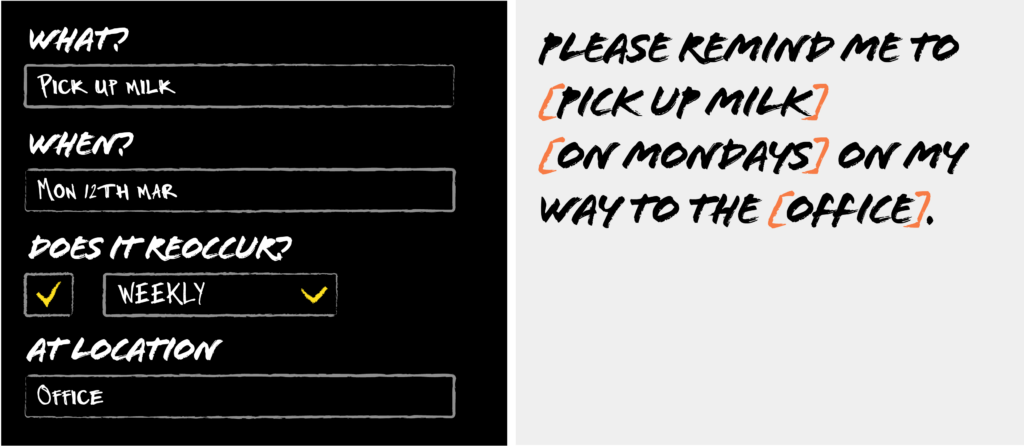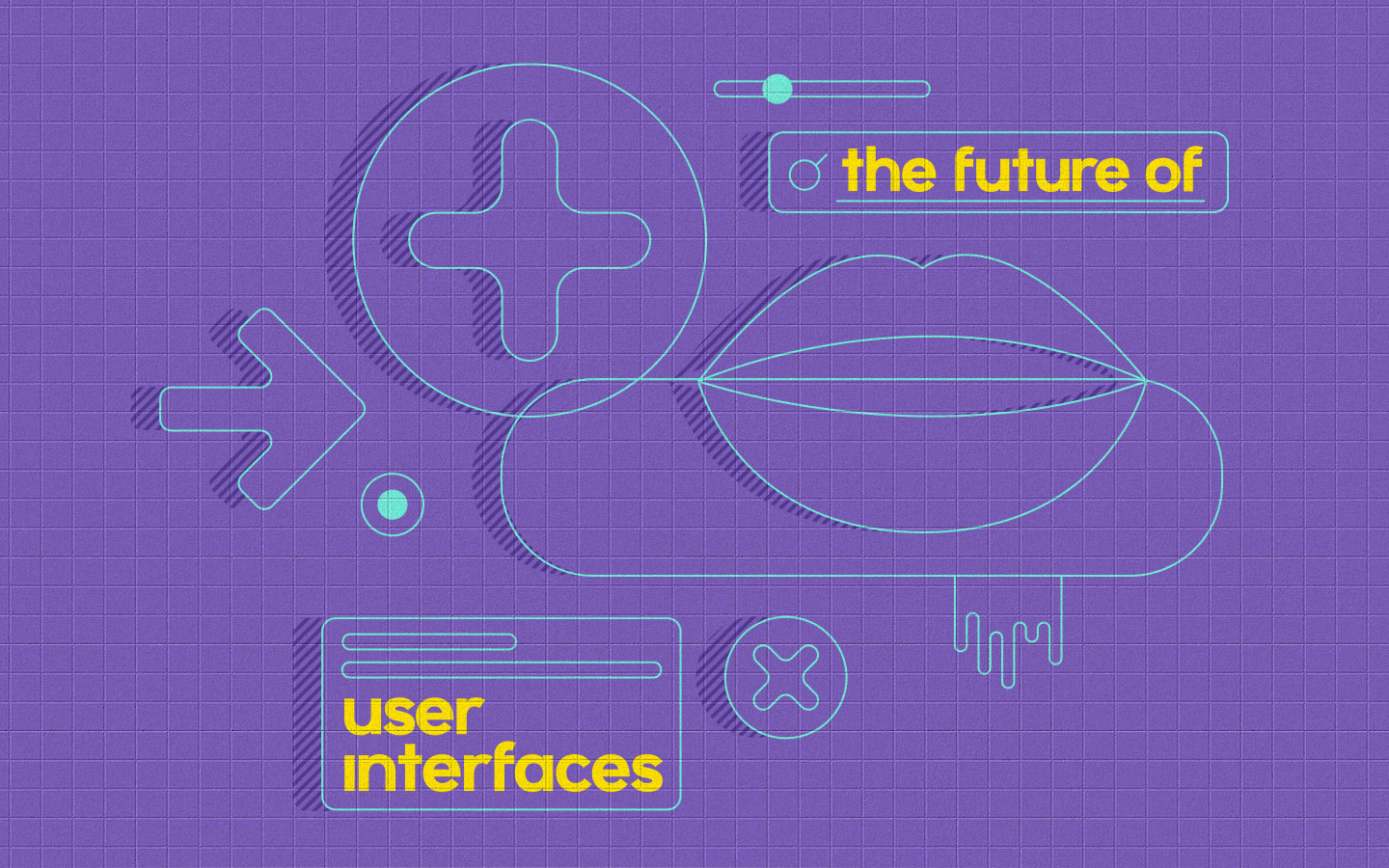Combining Natural Language and Structured Data for a Better User Experience
As the Chief of Product and Design at Sauce, I'm always looking for new ways to enhance the user experience and make our solutions more intuitive and efficient. One area that I'm particularly excited about is the combination of natural language processing and structured data.
Chat-GPT has shown us the potential of natural language processing in the world of user interfaces. By generating human-like responses to a variety of prompts, chatbots like Chat-GPT can create a more natural and intuitive way for users to interact with technology.
Example
Traditional UI expects the user to provide structure to the data it gives an application. For example, filling in a form with specific information grouped into different inputs.
As an example let’s take a todo list item. The structured data may look something like this:
- What to remind me about
- When to remind me
- Does it reoccur
- Is it linked to a location
When interacting with a chatbot, the AI is inferring the structure from just one sentence.
“Please remind me to pick up some milk every Monday on my way to the office”

Current Limitations
As I've explored the possibilities of Chat-GPT, I've also seen the limitations when it comes to retaining structured data. That's where the combination of natural language processing and structured data comes in. By integrating chatbots with structured data from traditional applications, we can create a more seamless and natural way for users to interact with their data.
Imagine being able to ask a chatbot to pull up a report from your CRM system and then having a natural language conversation with the bot to analyse the data. We’re actually already there with the tech, this sort of UI will become more and more common in applications in the future.
The Future
Consider how much more efficient it would be to create a to-do list using a chatbot that's integrated with your project management tool, rather than having to switch between different applications.
In the future, your personal chatbot has access to your calendar, email, Slack, SMS, to-do list, and even your location. When you wake up in the morning, you can ask it to prioritise your agenda for the day, based on your schedule and any urgent messages or tasks that need to be addressed. As you go about your day, your chatbot can provide subtle reminders of upcoming events or important emails that have arrived in your inbox. This kind of personalised and intelligent assistant can help streamline our lives, allowing us to focus on what's truly important and leaving the mundane tasks to our chatbot. With advancements in natural language processing and the integration of various tools, this kind of technology is becoming more and more feasible.
This is the future we imagined when Siri, Alexa & Google Assistant first appeared but in the last 10 years (damn you old Siri!) they have failed to live up to expectations.
As we continue to refine our understanding of natural language processing and structured data, I believe we'll see a shift towards more natural and intuitive user interfaces that combine the best of both worlds.
Conclusion:
Chat-GPT and other AI chatbots are paving the way for a new era of user interfaces that rely on natural language processing. By combining this technology with structured data, we're opening up a whole new realm of possibilities for how we interact with the digital world. As the Chief of Product and Design at Sauce, I'm excited to explore how we can leverage this technology to enhance our own solutions and provide the best possible experience for our customers. Stay tuned for more updates on our journey with chatbots and structured data!


